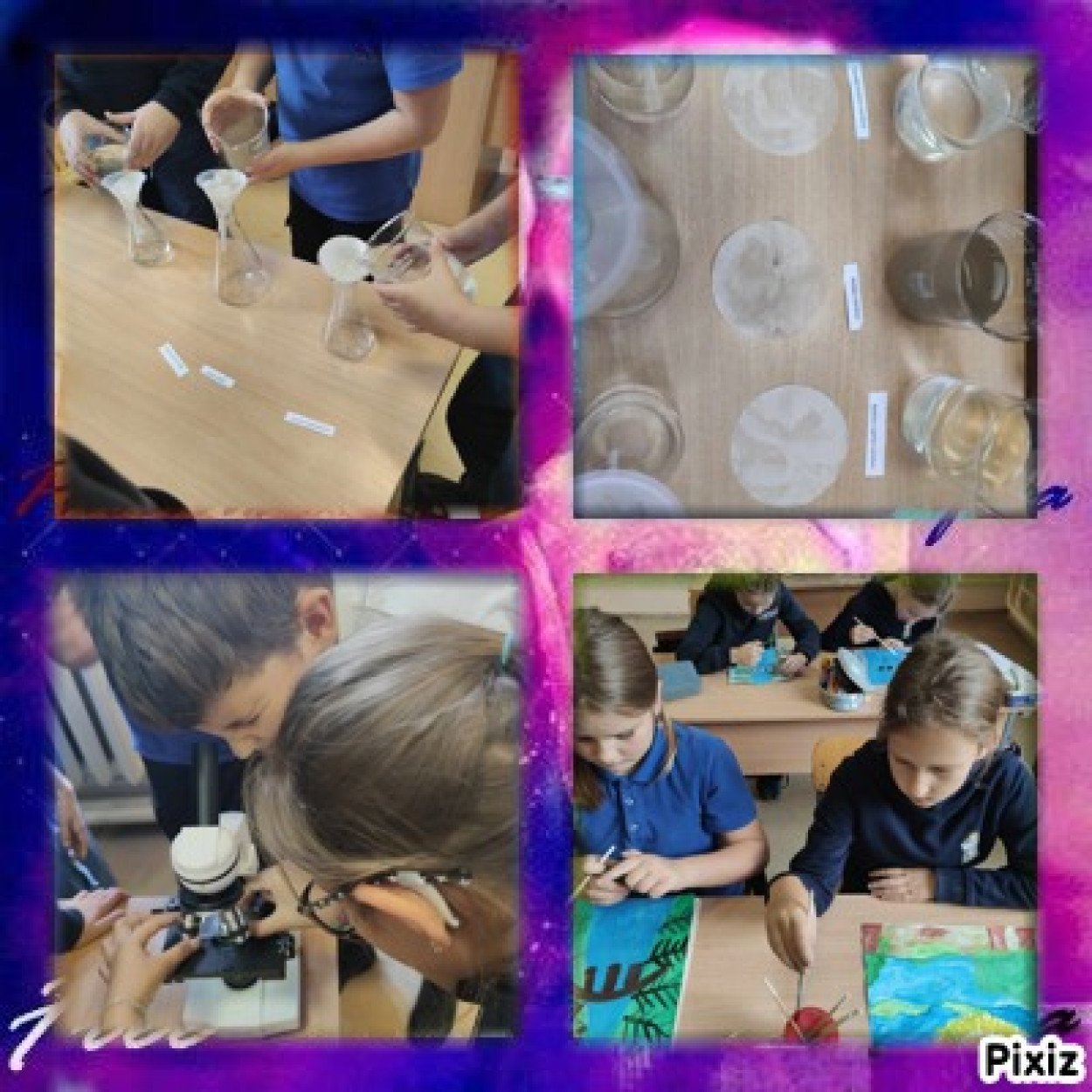
Integruota gamtos mokslų ir dailės pamoka #ProBleu
Integruota gamtos mokslų ir dailės pamoka #ProBleu
Ketvirtokai nutarė įsitraukti į tarptautinio projekto „ProBleu“ „Ką slepia Balčios upelio vandenys?“ veiklas. Gamtos mokslų pamokoje mokiniai išmoko filtruoti ir nusprendė atlikti įdomų mokslinį tyrimą, kurio metu analizavo trijų skirtingų šaltinių vandenį: geriamąjį vandenį iš mokyklos krano, vandenį iš rudeninės balos, bei vandenį iš Balčios upelio.
Prieš pradėdami tyrimą, mokiniai išsikėlė hipotezę, kad balos ir upelio vanduo bus nešvaresnis nei vanduo iš čiaupo, tačiau jie norėjo patikrinti, kaip skirtingi vandens šaltiniai atrodys po filtravimo.
Vaikai surinko vandens mėginius, juos filtravo ir atidžiai stebėjo pro mikroskopus, kaip keičiasi vandens skaidrumas. Rezultatai išties nustebino: nors buvo tikimasi, kad balos vanduo bus ypač užterštas, pasirodė, kad po filtravimo jis tapo beveik toks pat skaidrus kaip ir vanduo iš krano. Vis dėlto Balčios upelio vandens filtras išliko visiškai švarus, žiūrint plika akimi, ir tik pažvelgus per mikroskopą matėsi keletą smulkių priemaišų.
Šis eksperimentas parodė, kad vaikų iškelta hipotezė pasitvirtino – balos ir Balčios vanduo iš tiesų buvo labiau užterštas nei vanduo iš čiaupo. Vaikai džiaugėsi atlikę tyrimą ir išmokę apie vandens valymo procesus bei gamtos ypatumus. Pamoka baigėsi Balčios peizažo piešimu.
Integrated science and art lesson #ProBleu
The fourth-graders decided to get involved in the activities of the international project "ProBleu" "What are the waters of the Balcia stream hiding?" In nature, the students learned to filter and decided to conduct an interesting scientific research, during which they analyzed lessons from various sources: we drink water from the school tap, from an autumn puddle, without water from the Balcia stream.
Before starting their research, the students hypothesized that pond and stream water would be dirtier than tap water, but they wanted to test how different water sources would look after being filtered.
The children collected water samples, filtered them and carefully observed through microscopes how the transparency of the water changes. The results were really surprising: although the puddle was expected to be extremely polluted water, after filtering it turned out to be almost as clear as tap water. However, the Balcia stream water filter remained completely clean to the naked eye, and only a few small impurities were visible under a microscope.
This experiment shows that the hypothesis put forward by the children was confirmed - the water of Bala and Balcia was not more polluted from tap water. The children were happy to do research and learn about water purification processes and features of nature. The lesson ended with drawing the landscape of Balcia.
https://probleu.school/nemaksciai-martynas-mazvydas-gymnasium/
Mokytoja Jūratė Dumskienė




-item-600.jpg)